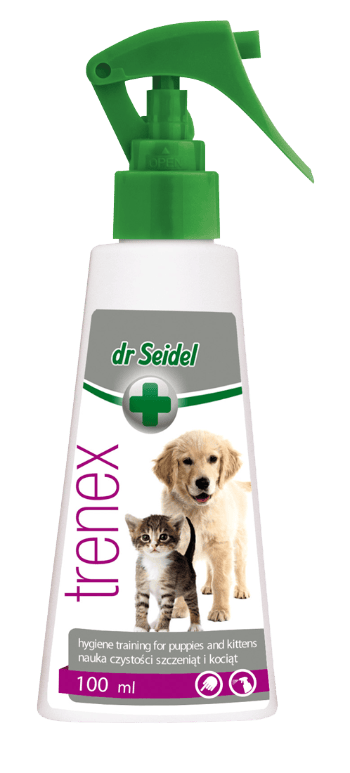Cleanliness training for puppies
Cleanliness training for puppies
As soon as your puppy arrives at your house, a wonderful journey of the whole family into the animal world begins. This is the day when you should start raising your pet. The most important thing, of course, is to build proper relations, so it is worth spending a lot of time on getting to know each other and building mutual understanding. The so-called pets (companion animals), such as a dog or a cat, as the name suggests, very often live quite closely with us, inhabiting the same flat and accompanying us in many important, everyday activities. The natural behaviour of animals is their unwillingness to soil their “nest,” meaning our home, in fact. It is the role of their carers to help the puppy find a place to take care of his natural physiological needs. It should be remembered that young animal learns very quickly, which should be used from the very beginning to train it to take care of its needs on surfaces such as grass/sand, etc. Special primers (or newspapers) may be used, but only at an early stage of education. This is related to the slow acquisition of an individual resistance to pathogens and is allowed only when bringing the animal to a clean surface is not possible.

A recipe for learning cleanliness:
- Careful observation
- Patience
- Facilitation (directing)
- Rapid response
- Reinforcement (positive)
- Understanding
- No punishment
- A friendly atmosphere
Careful observation of the animal plays a key role in teaching cleanliness. That is why it is extremely important that the animal should initially be within the sight of the carer who should become observant and immediately react to behaviours such as a significant excitement, intense sniffing or spinning, which indicate that the animal searches for a suitable place to take care of its physiological need. The carer’s task is to either direct the animal towards the hygienic mat or immediately take the pet outdoors. Special preparations for teaching cleanliness, such as Dr Seidel’s ‘Trenex‘, which is perceived by animals as if they were smelling urine, can be helpful because it makes them take care of their needs in a place designated by the carer. To indicate the specific area, spray e.g. a mat, grass or litter tray (for cats) with a small amount of preparation and bring the animal there. Once the animal decides to urinate in the designated place (you should patiently wait for this to happen), you should reward it. The reward strengthens the desired behaviour and thus makes it more likely in the future. An animal rewarded with praise, something delicious or playing with it will soon learn that it is worth behaving that way. It is also advisable to continue the walk and keep on with the attractions related to it, which should appear only after the recommended behaviour.
This method of learning cleanliness should be reproduced every time an animal feels the need to take care of its physiological needs. This happens most often after sleeping, eating, drinking and playing. Keep in mind that a puppy eats more than an adult animal, which makes it take care of its needs more frequently. You may find that some animals will need an individually prepared training plan. It is then worthwhile seeking help from a trainer or animal behaviourist. Of course, there are also “setbacks” in the course of learning cleanliness, but they must be ignored. Any kind of pressure and punishing for mistakes is unacceptable. It will only discourage your dog (or cat) and it can contribute to further behavioural problems of the animal.
mgr inż. Marta Hohensee
animal trainer and behaviourist at COAPE
17 September 2016
